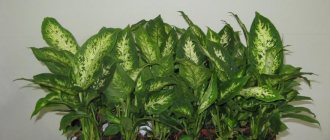- August 12, 2019
- Houseplants
- Daniil Belousov
Aloe is an ornamental plant that is distinguished by very fleshy and thick leaves. It is widespread in African countries. However, everyone knows it under the name agave, since it grows in almost every home. Many people are familiar with the amazing healing properties of this plant. But like any other, it needs proper nutrition, lighting and watering. Therefore, let's look at the features of aloe vera. How to care for this unique plant at home?
Lighting
It is immediately worth noting that this plant is very demanding of light. Therefore, it is best to place it on the sunny side. This is especially true for the cold season. During this period, you need to periodically move the aloe to the most illuminated points of the apartment. If there is not enough sunlight in the room, then in this case the plant will have to be illuminated using artificial lighting.
During the hot season, it is recommended to place aloe on the balcony, or even directly outside. In this case, the plant will happily enjoy direct sunlight. This is one of those plants that is not afraid of sunlight. Since its leaves are filled with a jelly-like mass, the sun’s rays cannot damage the hard peel.
What energy does aloe bring to the apartment and its inhabitants?
Nowadays, aloe is considered a plant that is ideal for an apartment, as it brings only positive energy into the house. Even in Ancient Egypt, the flower was considered sacred, in the West they believed that aloe was a symbol of love and prosperity, and in Africa they still hang the leaves of the plant over the door so that they absorb the negative energy that enters the house.
Bioenergetics specialists recommend having aloe for those whose families often get sick and quarrel. In such cases, the flower will help strengthen the aura of the house. To enhance the aura, it is best to place several flowers on windows on the east side. A dry leaf is hung in the house above the door in order to protect household members from the evil eye and damage.
You can also make a protective talisman from aloe. To prepare it, the roots and leaves are dried and placed in a small bag, which is worn as a pendant around the neck or simply in the pockets of clothes.
A plant in the house will bring prosperity, longevity and success to household members. By placing it in the bedroom, you can improve the intimate life of a couple.
Aloe is considered a magical plant that attracts love. Previously, the leaves of the flower were used in ritual to attract love. It was necessary to collect 13 leaves, dry them, and burn them on the 13th day. The ashes were poured onto the threshold, and the flower was asked for forgiveness for the torn leaves.
The plant blooms very rarely, but if flowers do appear, then prosperity and positive energy will come to the house.
Watering
If we talk about how to care for aloe, the description in any specialized literature will contain information that you do not need to “water” this amazing plant abundantly and often. Moreover, it is better not to water the aloe once again than to add too much moisture to the soil.
In the cold season, the flower is moistened as needed when the soil dries out. Moreover, for watering it is recommended to use dispersive sprinklers. When the warm season begins, aloe is watered every day. However, the procedure is performed exclusively through the pallet. That is, water is not poured directly to the roots, but only into the pot stand. It is also worth paying attention to the fact that it is recommended to first pour water into the tray and then wait 20-30 minutes. If there is anything left in it, the liquid is drained. In this case, you can avoid the fact that the soil will take more moisture than it needs.
Special aloe vera flower
What is unique and useful about the aloe succulent? Caring for a growing plant at home allows you to always have an assistant in the fight against germs, fungi and bacteria.
Aloe vera has an antibacterial and disinfectant effect. You just need to apply the gel to your palms and rub. Germs and dirt will be destroyed by the plant sap.
You can use aloe vera succulent as an effective vegetable and fruit wash, it is a true natural product without chemicals.
Aloe vera flower is rightfully considered a natural analgesic and the first aid for skin damage.
Content temperature
How to care for aloe? If we talk about temperature conditions, it is best to install the flower on a window on the south or east side. In this case, the plant will not be able to freeze and at the same time receive the greatest amount of light. When it gets cold, be sure to place the pot on the warmest window. Care must be taken to ensure that the temperature does not drop too low. Otherwise, the aloe will stop blooming and developing. Since this plant originated in Africa, this means that it is dependent on sunlight, and therefore on heat. Nevertheless, home room temperature is quite enough for this flower.
If we talk about the minimum permissible temperature in the room, then for aloe in a pot it is +15 degrees. It is undesirable for it to go lower. If the plant begins to freeze, the foliage will become more lethargic and lifeless.
If it is a cold winter, then in this case it is recommended first of all to insulate the windows on which the flowers are located, and also to ensure that there are no drafts. You can put a sheet of polystyrene foam or other warm material on the windowsill, which will create an elevation and prevent the pot from coming into contact with the cold window sill. This will prevent hypothermia through the so-called bottom ball of soil. If the plant gets too cold, the roots may begin to rot. It is very difficult for an agave to recover from this.
Choosing a place for a plant
Aloe will quite like a place reminiscent of his native Africa. Therefore, the plant is welcomed by owners of sunny windowsills where other flowers burn. In this case, direct rays will not be harmful: use them safely, and in winter you can use additional lamps.
Room temperature is optimal for aloe. In general, aloe rarely “complains” about temperature and humidity when in an apartment, for which it has been deservedly recognized as an unpretentious indoor plant.
- In the summer, the pot can be taken out into the open air, but protected from heavy rainfall.
- In winter, it would be good to send aloe to rest: the plant’s dormant period requires a cool place (about 14 degrees). Then the bush will not stretch out in a vain search for the winter sun.
What kind of soil is needed
Aloe requires careful care in this regard. This also includes preparing the right soil. In this case, most experts recommend giving preference to slightly acidic soil compositions. This ideal soil for aloe consists of turf and leaf soil, humus and coarse river sand. Also, do not forget about drainage. In this case, you can use ordinary broken stones. And if a transplant is carried out, then before this procedure it is necessary to clean the aloe roots from the old soil and treat them with charcoal.
Possible problems during landing and immediately after it
Often, planting and propagation of aloe occurs without any difficulties. But sometimes gardeners complain that this succulent does not take root. Therefore, you should find out why this happens.
The most common cause of plant death is excessive soil moisture, which is associated with improper watering. To correct the situation, you need to remove the plant from the pot and clean out the rotten areas and roots with a knife. After this, sprinkle the fresh wounds with charcoal and dry for several days in a dark place.
Then plant in a substrate consisting of sand and turf in equal proportions. The plant should not be watered for the next 2 weeks. If during this time the rotting process does not resume, then the soil in the pot can be slightly moistened. As soon as the plant fully strengthens and begins to grow, it needs to be transplanted into a full-fledged substrate.
Mealybug is a dangerous pest of succulents
Another reason why aloe does not take root may be mealybugs. This pest lays eggs in the roots of the plant. As a result, the emerging larvae feed on the sap of the plant, which prevents rooting. In this case, it is recommended to water the plant with a solution of the drug Aktar (1.4 g per 6 l). After a week, spray the plant and soil in the pot with phytoverm.
Note! Treatments should be carried out until the pest is completely destroyed, alternating medications.
What to do if it doesn’t take root
If, despite all the efforts expended, aloe still cannot fully take root, you need to check whether all recommendations are followed. When planting and growing, everything matters, so even the smallest details should not be ignored.
Most often, the plant cannot fully take root, since the temperature regime during the rooting period is not observed. In this case, it is recommended to repeat the planting, replacing the entire soil. You should also wash the pot well and scald it with boiling water.
Growing aloe, like other succulents, is not difficult; the main thing is to provide the plant with conditions that are as close as possible to its requirements. First of all, this concerns planting, since future development depends on this. Otherwise, even an inexperienced gardener can cope with caring for aloe.
Aloe: how to care and replant?
If we talk about the dimensions of the pot for replanting, they are determined based on the size of the root part of the plant. Therefore, before performing any transplantation manipulations, it is necessary to determine the width and length of the root system. The pot is selected in such a way that the roots can fit freely in the container. It should be taken into account that the agave develops quite quickly, and accordingly, the root system begins to grow. But this does not mean that you need to immediately plant the plant in a huge pot. It is best to perform the transplant procedure more often. Then the aloe will feel better, and the soil will not oxidize.
How to land
After drying the cut, cuttings or leaves are planted in previously prepared soil. They do it like this:
- The leaf is placed in moist soil with the tip down to a depth of three centimeters.
- Cover the cutting or leaf with a glass jar or film.
- Place the container with the seedling in a bright place.
- When planting shoots, choose one that already has up to six leaves. Bury in the ground up to the beginning of the bottom sheet. To give the sprout strength, it is surrounded with small stones. Further cultivation is also carried out in a greenhouse, with proper care of the plant.
- The “babies” are transplanted with roots. If the roots were damaged during the separation of the shoot, they are dried for several days before planting in the ground. Undamaged individuals are planted immediately.
Top dressing
When considering how to care for aloe, you should not miss this important stage. Like any other plant that is in the room, the agave also needs to be fed periodically. It is important to consider that only healthy plants are fertilized. If aloe is sick, then first of all it needs to be cured. After replanting a damaged flower, it is recommended to fertilize it no earlier than after 3 months.
It is also worth paying attention to the fact that any fertilizers are applied only after watering. It is recommended to feed the plant exactly when it is actively growing. In order to decide how to care for aloe, the description of the plant should be studied in detail and the optimal feeding for the agave should be selected. For example, experienced flower growers recommend the preparations “Power of Life”, “Agricola” and “Bona Forte”.
It is also recommended to apply fertilizers through a tray. In this case, you can protect the plant from the possible aggressive effects of some components.
Description of aloe vera flower
A bush with a short stem - this is what a flower looks like in nature. Its root system is poorly developed. The leaves are directed upward and have a fleshy structure, with thorns along the edges, and are able to retain moisture for a long time. The leaf width reaches approximately 15 centimeters, and the leaf length ranges from 60 to 100 centimeters. The leaf color is bright and rich. The color of the leaf can have two options: green and blue-green.
15 plant species are medicinal. Among them, aloe vera is considered especially popular.
Aloe vera has several names, namely: aloe Barbados, also known as real aloe. Barbados is the birthplace of this most valuable flower. As a houseplant, aloe vera is grown much less frequently than the tree plant.
The most valuable component is the unique aloe vera juice. No less useful is the gel-like mass that is located inside the sheet. In cosmetology, pulp and juice are widely used. Gels, scrubs, and masks are prepared from it.
The most studied succulent turned out to be aloe vera; its medicinal properties and uses have been known for a very long time and have been thoroughly studied. It is actively used in folk medicine, pharmacology, perfumery, and cosmetology. This flower is considered the most unpretentious indoor plant.
You just need to know how to grow aloe vera at home and organize proper care for the plant.
Important! You need to know that when growing a flower for medicinal purposes or cosmetic procedures, you should not use complex mineral fertilizers.
It is necessary to grow aloe vera in well-lit rooms, periodically turning the succulent on different sides towards daylight to avoid bending of the stem.
Root pruning
This procedure is usually performed during the process of transplanting or planting a fairly mature aloe. In this case, the roots of the plant are pruned. This manipulation is performed to ensure that the plant grows at a faster rate in the new soil. Foliage pruning is also carried out. Thanks to such manipulations, it is possible to control how widely aloe will grow. For example, if you want the flower to grow upward or not rest against the walls of the pot, then in this case the leaves and shoots located on the sides are removed.
Aloe at home: what to do after purchase?
It is necessary to ensure careful transportation . This is necessary in order not to damage the aloe leaves, which contain all its healing power.
At home, the new plant must withstand quarantine . It is advisable to keep it separate from other flowers for a week. During this time, it is better not to water the aloe. If the soil in the pot is too dry, watering once is possible.
A week after purchase, the plant should be replanted. You will need good, breathable soil for succulents and a new pot. The distance between the aloe roots and the walls of the pot should be about 1.5 cm . The plant does not need feeding for the first 3-4 months after transplantation.
Reproduction
This is another important step in how to care for indoor aloe. As a rule, such procedures are performed simultaneously with plant transplantation. The easiest way to get a new flower is from an aloe leaf. To do this, during the replanting process, you need to cut off several mature leaves, on which fairly hard thorns have already formed. After this, they are left for some time to dry. At the next stage, the leaf plates are planted directly into the ground. The land also needs to be prepared.
In this case, it is necessary to mix leaf soil, sand and slightly moisten the soil. After this, the future sprout in the pot should be placed in a fairly bright place, where the temperature is 15-18 degrees Celsius. It is worth being patient, as the first root of a young seedling does not appear quickly. This does not mean that you need to start being diligent and watering the plant every day. This is completely normal, so just wait a little longer.
If you take good care of such a young plant, feed it and monitor its health, then within three to four years flowers will begin to appear on it. Aloe vera (how to care for it is described in the article) is really capable of blooming. Few people know about this. However, aloe pampers with its beautiful inflorescences only those gardeners who are the luckiest.
Features of aloe
The leaf blades of aloe that are part of the rosette grow from the root, most often they are fleshy. There are species that have thorns on their foliage, and there are also those that do not. Some species have a waxy coating on the surface of the foliage. During flowering, the bush is decorated with flowers of red, yellow or orange color. The shape of the inflorescence, depending on the species, can be racemose or paniculate; most often the flowers are bell-shaped or tubular.
Some species have healing properties, so they are used in alternative medicine. Aloe juice helps to quickly cure ulcers and burns. It is also used to make masks because it has restorative and rejuvenating properties. The foliage is used to obtain a substance with a laxative effect. Not only many types of aloe are grown in culture, but also varieties.
Humidity
If we talk about caring for aloe, then you should pay attention to this important indicator. It must be taken into account that overly moist soil is not suitable for agave. At the same time, the air in the room should not be very dry. Therefore, if it is not possible to install a pot of aloe in the room in which the air is humidified, then at least once a week it is necessary to spray the plant trunk with water using a sprayer. It is also recommended to humidify the space next to it.
What does the agave like?
Some gardeners stimulate Aloe to bloom. To do this, it is necessary to create ideal conditions, namely:
- The air temperature should be maintained around 14°C. Because the plant, under extreme conditions, tries to reproduce by starting to bloom;
- the air must be dry so that the roots do not begin to rot;
- For watering, only a tray is used, into which water is added for 10 minutes and then drained.
Reference. Aloe blooms for six months. For more abundant flowering, you need to add minerals twice a month. In this case, the soil must be pre-moistened.
Diseases and pests
Very often, gardeners grow several types of aloe together under similar conditions. This mixture of seeds for growing together is called aloe mix. Home care is not much different between species when it comes to insects and diseases. They suffer equally from pests, just like any other plants.
Even despite its vitality, aloe can develop root rot. To exclude the possibility of this disease, you need to carefully examine the plant. If it has at least a few leaves that are much darker and look limp, then in this case you need to remove the agave from the pot as quickly as possible and inspect the roots. It is quite possible that they have begun to rot. This can happen if you water the plant too often or too much. After assessing the root system, you need to cut off all damaged roots and transfer it to new soil. If no healthy roots are found at all, then in this case you need to remove all the diseased roots and re-root.
When considering how to care for aloe, you should be prepared for the fact that the plant may suffer from dry rot. In this case, we are talking about drying out of the root system. The same will be visible on the leaves. As a rule, in such situations it is almost impossible to save aloe, since this unpleasant condition progresses too quickly.
Aloe can also harbor scale insects. This is a fairly common pest that likes to settle on the back of leaves. If you lift the leaf, small wax shields no more than 2 mm long will be visible on it. The worst thing is that these pests form large colonies that are located on plant stems. You can also pay attention to the leaves. If red-brown spots appear on them, this indicates that the damaged areas will soon die. It is noteworthy that it is very difficult to get rid of this pest if it proliferates greatly. Therefore, it is worth periodically inspecting plants for the presence of such insects. If you suspect this pest, it is recommended to wipe the plant daily with a cotton cloth soaked in vinegar. Chemical insecticidal preparations for scale insects - “Fitoverm” and “Aktara”.
Description of plant crop
Aloe, or agave, belongs to the genus of succulents of the Asphodel family. The flower is native to South Africa. In modern natural conditions, the culture grows in Ethiopia, Somalia, South-West Africa, South Africa, the United States of America, Asia, the Mediterranean, New Guinea and Europe. The plant can also be found on the Arabian Peninsula and the island of Madagascar. Aloe grows in hot climates. Mountain deserts, savannas and coastal semi-desert areas are good for it.
The plant culture is a perennial herbaceous or tree-like plant, reaching a height of 10-15 m. The trunk diameter can be 2 m. Tree-like specimens have a thick reddish trunk, on which there are traces of dead foliage of the lower part of the succulent.
The juicy and fleshy leaves of the agave, 2 cm thick, grow up to 60 cm in length and up to 4 cm in width. They are convex at the bottom and concave at the top. There are sharp thorns along the edges of the leaf plates. The shape of the leaves can be lanceolate, oblong-lanceolate, xiphoid or deltoid. They are greenish-gray or dark green in color with a waxy coating. Leaves may also be characterized by dark and light spots or yellow streaks.
The flowers of the plant are collected in racemes or paniculate inflorescences of yellow, orange, coral or white color. Perianths are simple, tubular; they are formed from six linear petals arranged at the base in two circles, like the six stamens.
Under favorable conditions, agave can bloom and bear fruit every year or every other year.
Other pests
Even with good care, aloe at home can suffer from mealybugs. This is one of the largest and most visible pests. As a rule, it is removed from the plant mechanically. To do this, just use a brush and tweezers. After removing all the scale insects, it is necessary to treat the affected areas of the plant with garlic broth (half a liter of water is brought to a boil, 4-5 cloves of garlic are added, and left to cool). During this period, it is recommended not to expose the plant to direct sunlight. It's better to move it to the shade. In the most severe situations, an insecticide can be used.
Aloe can also be periodically attacked by spider mites. These are very small pests that are almost impossible to notice. They do not like cold water, so in the summer you can spray the agave with a very cold solution of soapy water or tobacco. Spider mites simply cannot tolerate these components. Garlic broth also shows high effectiveness. If all else fails, you can use chemicals.
Proper care of aloe and flower maintenance at home
Proper care and maintenance of your home flower in the recommended conditions will help keep it in good condition and even promote its flowering. Despite the unpretentiousness of the flower, it is still worth following certain rules.
Choosing soil and pot
You can purchase soil for growing aloe or prepare it yourself. When purchasing a mixture, you need to choose soil for succulents. The advantage of this choice is that the substrate can be used immediately and does not need to be disinfected.
To prepare the mixture yourself, you need to mix leaf soil, turf soil and peat in equal quantities.
Peat should be slightly acidic or neutral. Another option for preparing soil with neutral acidity is mixing turf, leaf soil, sand and humus in a ratio of 1:1:2:1. You can add charcoal and brick chips to the soil to create drainage. After mixing all the components, the substrate is placed in the oven for 10-12 hours at a temperature of 60 degrees for disinfection. The soil must be allowed to cool before planting.
The substrate for aloe should be loose and easily permeable to water and air. In addition, the acidity should be weak or neutral.
The size and material from which the pot is made has a great influence on the root system of the flower. A pot that is too large will allow liquid to accumulate and cause root rot.
A pot that is too small is too small for the roots, which can result in leaves falling and turning yellow. To choose the right pot, you need to give preference to one that is 1.5 times larger than the diameter of the root system. With each transplant you need to choose a slightly larger pot. It is also better to give preference to a ceramic pot. Iron pots can poison the flower with oxidation products.
Watering frequency and air humidity
In summer, the flower is watered several times a week, in winter - several times a month. It is recommended to use warm filtered water for irrigation. The temperature of irrigation water should average 18-20 degrees. Cold water can cause leaves to turn yellow. The flower easily tolerates drought, so it does not need to be watered too often.
Excessive watering can lead to rotting of the root system. Under no circumstances should water stagnate in the pot. An hour after watering, excess water is drained from the tray of the pot. Experts recommend watering flowers when the top layer of the substrate is completely dry.
Aloe is unpretentious to the level of humidity in the room, but it must be regularly wiped with a wet cloth or sprayed with warm water to prevent dust from accumulating on the leaves.
Lighting and temperature
The flower loves sunlight very much, thanks to which it grows quickly. Experts recommend placing the pot on the south, west or east side of the house. Do not forget that direct sunlight can cause burns to the leaves, especially in the spring, when aloe is just entering the active growth phase.
In summer, the pot can be taken outside, but at lunchtime the flower should be in the shade.
In order for the plant to grow quickly, it is necessary to provide it with warmth, since it comes from a tropical climate. In warm weather, the average room temperature should be at least 24 degrees. In winter, the temperature should not be allowed to drop below 12 degrees.
Since the flower is dormant in winter, it can easily tolerate this temperature. In addition, the plant should not be allowed to stand in a draft or there should be too sudden temperature changes in the room. Such conditions can not only slow down the growth of aloe, but also harm it.
Fertilizer
To feed flowers, you can use ready-made fertilizers for succulents and cacti. They must be applied from the beginning of spring to the beginning of autumn, when aloe is in the active growth phase. It is necessary to fertilize once every few weeks.
In addition, you can use so-called banana water. You can prepare it yourself by soaking 2-3 fruit skins in a liter of water. This water can be used to water the plant constantly during the growth period.
Hygiene
In the summer, every week you need to wipe the aloe leaves, spray it with water or “bathe” it in the shower. This will help clear the leaves of dust and accumulated dirt. Cleaning the pores on the leaves will increase photosynthesis and carbon dioxide absorption in the room.
Hygienic procedures are mandatory, since pores clogged with dust negatively affect the oxygen exchange in the flower cells, and it may die.
Diseases, pests of aloe flowers and their control
Very often, flower diseases arise due to non-compliance with maintenance rules. The appearance of curled leaves indicates contamination. To eliminate this problem, you need to regularly wipe them with a damp cloth and spray with warm water. The leaves may also turn yellow. This is how their reaction to insufficient watering manifests itself.
Drying tips may indicate a cramped pot.
And rotting of the roots is observed with excessive watering and high humidity in the room. Large amounts of direct sunlight can leave burns on the leaves.
Aloe diseases can also be caused by parasites. The most common are spider mites, thrips, nematodes, and mealybugs. To combat them it is necessary to use insecticides. In order to carry out treatment on time, you need to regularly inspect the plant.











